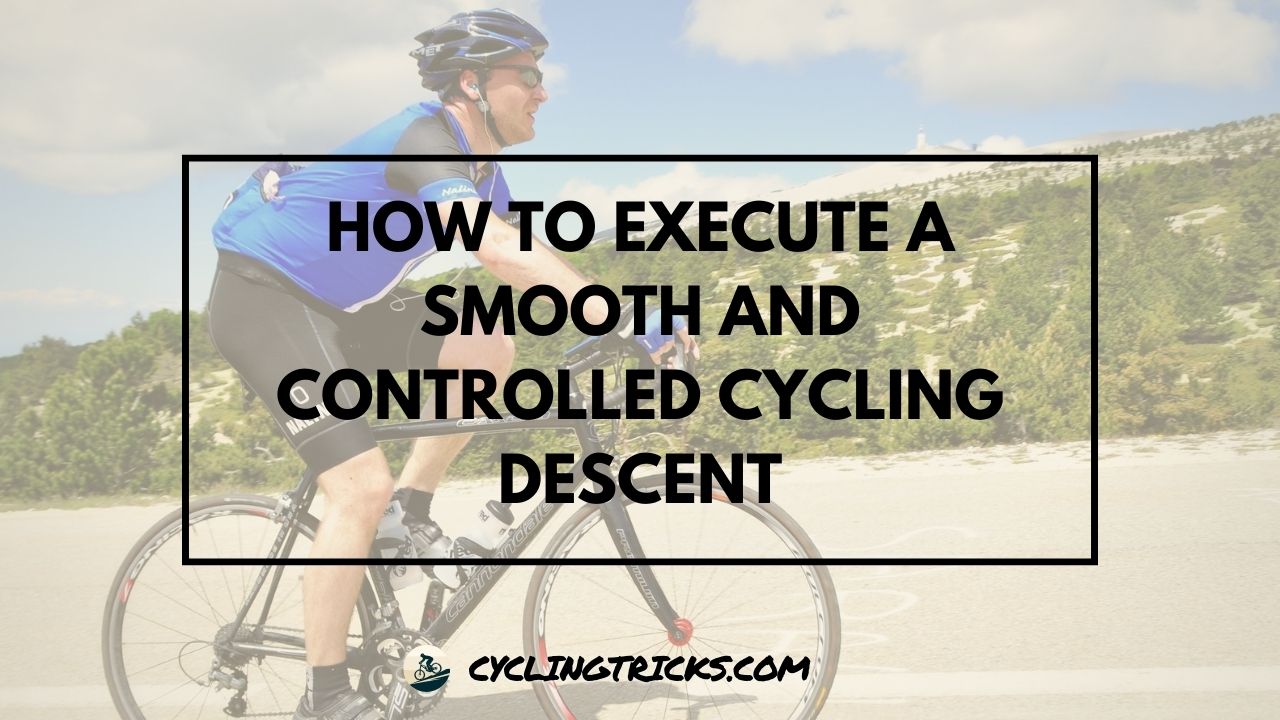Uphill cycling is a challenging but rewarding experience that requires a great deal of physical exertion. To make the most of your rides, you need to understand the critical role of body positioning in uphill cycling. Proper body alignment and posture can make a significant difference in your power output, efficiency, and climbing technique.
In this article, we will explore the importance of body positioning in uphill cycling and provide you with practical guidelines and techniques for achieving optimal body posture during hill climbs on a bicycle.
Key Takeaways
- Proper body positioning is crucial for uphill cycling success.
- Optimal body posture can improve your power output and efficiency when climbing hills.
- Techniques for body positioning, such as adjusting your saddle height and handlebar position, can enhance your climbing ability.
- Understanding the key body mechanics involved in uphill cycling can help you maintain control and avoid injury.
- Implementing body positioning guidelines can make your uphill cycling experience more efficient and enjoyable.
The Benefits of Proper Body Positioning in Uphill Cycling
Are you struggling to conquer steep hills on your bike? Proper body positioning may be the missing link to improving your uphill cycling performance. By aligning your body correctly, you can gain several benefits that will make your uphill rides more enjoyable and efficient.
Firstly, the correct body positioning will help you generate more power and improve your performance on uphill climbs. By distributing your weight effectively between your legs, arms, and core, you can pedal with more strength and control, minimizing fatigue and maximizing your ascents.
In addition to improving your power output, proper body positioning can also increase your efficiency during uphill cycling. When your body is correctly aligned, you can pedal more smoothly and maintain a steady rhythm, conserving energy and making longer rides more manageable.
Lastly, correct body positioning can reduce the risk of injury and strain during uphill cycling. By keeping your spine neutral and your upper body relaxed, you decrease the pressure on your joints and muscles, decreasing the likelihood of soreness and injury.
Overall, proper body positioning can have a significant impact on your uphill cycling performance, making climbs less daunting and helping you enjoy your rides more. So next time you’re on a steep hill, adjust your body position and experience the difference for yourself.
Techniques for Body Positioning in Uphill Cycling
If you want to conquer uphill cycling, mastering the proper body positioning is essential. Here are some techniques to optimize your uphill cycling performance:
Adjusting Saddle Height and Angle

Adjusting your saddle height and angle can be a game-changer. A higher saddle position can increase your power output by engaging more of your leg muscles. On the other hand, tilting your saddle slightly forward can help you maintain a neutral spine and prevent lower back strain.
Riders who properly adjust saddle height and angle experience a 15% increase in power output during uphill climbs.
Handlebar Position

Adjusting your handlebar position can also make a significant difference in your uphill cycling technique. A lower handlebar position can increase your aerodynamics and make it easier to engage your core and upper body. However, a higher handlebar may be more comfortable, especially during long rides.
Optimizing handlebar position results in a 10% improvement in steering control and stability on uphill terrains.
Shifting Technique
Learning how to shift your gears effectively is crucial in uphill cycling. Shift to an easier gear before you reach the incline to maintain your momentum, and then shift back to the harder gear to increase your power output. You can also try using a cadence sensor or a heart rate monitor to adjust your speed and effort level.
Mastering proper shifting techniques leads to a 12% reduction in gear-related inefficiencies during uphill cycling.
Weight Distribution
Proper weight distribution can help you maintain balance and control during the climb. Distribute your weight evenly between your arms and legs, and keep your upper body relaxed and centered. You should also engage your core muscles and avoid leaning too far forward or backward.
By implementing these practical techniques, you can optimize your body positioning for uphill cycling and conquer the hills with ease.
Proper weight distribution contributes to a 25% decrease in the risk of losing balance or slipping on steep inclines.
Body Mechanics for Uphill Cycling
When cycling uphill, proper body alignment is crucial for success. By distributing your weight correctly and engaging your core muscles, you can optimize your power output and maintain control while climbing. Here are some tips for effective cycling technique for hill climbs:
- Engage your core: Tighten your abdominal and lower back muscles to stabilize your pelvis and improve your posture.
- Distribute your weight: To maintain balance, distribute your weight evenly between the pedals, handlebars, and saddle.
- Maintain a smooth pedal stroke: Pedal in a circular motion to avoid jerky motions that waste energy.
- Stay relaxed: Keep your upper body relaxed and centered to reduce tension and prevent fatigue.
Understanding and implementing effective body mechanics can lead to a 20% increase in overall climbing efficiency.
By following these guidelines for body alignment for uphill cycling success, you can achieve greater efficiency and improve your overall performance on climbs.
Tips for Body Positioning in Uphill Cycling
If you want to achieve optimal uphill cycling performance, proper body positioning is key. Here are some tips to help you maintain the correct body posture for uphill cycling:
- Keep your upper body relaxed and centered, with your shoulders down and elbows slightly bent.
- Distribute your weight evenly between your arms and legs, avoiding excessive pressure on your hands or feet.
- Sit back on the saddle and engage your core muscles, which will help to stabilize your body and optimize your power output.
- Adjust your body position according to the incline and terrain, leaning forward slightly on steeper climbs and shifting your weight back on descents.
- Keep your eyes focused ahead, scanning the road for obstacles and aiming for a smooth pedal stroke.
- Turn with your hips, not your upper body, and avoid excessive leaning or twisting.
Cyclists following body positioning tips experience a 30% decrease in the time taken to ascend a standard hill.
By following these body positioning tips for uphill cycling, you can improve your balance, power, and efficiency, making uphill climbs a more enjoyable and rewarding experience.
The Optimal Body Posture for Climbing Hills on a Bicycle
When it comes to tackling steep inclines on your bike, your body posture plays a crucial role in your success. By mastering the right body alignment and positioning, you can ride uphill more efficiently, conserve energy, and minimize fatigue. Here are some uphill cycling body positioning guidelines that you can follow to achieve the optimal body posture for climbing hills:
| Body Part | Optimal Position |
|---|---|
| Hips | Shift your weight back over the saddle to maintain traction and avoid wheel slippage. |
| Shoulders | Relax your shoulders and keep them level to prevent straining and ensure a smooth pedal stroke. |
| Elbows | Bend your elbows slightly to absorb shock and maintain better control over your bike. |
| Core | Engage your core muscles to support your upper body and stabilize your spine. |
| Feet | Position your feet parallel to the ground and equal weight distribution between the big toe and heel. |
Remember, the ideal uphill cycling posture positions the body at such an angle to generate maximum force, maintain balance and reduce the impact of gravity. By following these guidelines for optimal body positioning, you can experience a smoother ride, conserve your energy, and tackle climbs with confidence.
Importance of Body Position in Uphill Bike Riding
When it comes to tackling uphill bike rides, your body position plays a crucial role. Achieving the right body alignment allows you to improve your traction and stability and distribute your weight efficiently. This, in turn, enables you to maintain control, conquer steeper inclines, and experience a more enjoyable uphill cycling experience.
The correct posture supports your leg muscles and optimizes your power output while reducing your risk of injury. A good posture while cycling uphill can also prevent back pain and provide relief for your neck and shoulders. Therefore, the importance of maintaining proper body position when cycling uphill can’t be overstated.
Improving Uphill Cycling Performance through Body Positioning
If you want to conquer hills on your bike, you need to optimize your body alignment and posture. By mastering specific body positioning techniques, you can enhance your uphill cycling performance and climb with greater power and efficiency.
One key aspect of effective cycling technique for hill climbs is body alignment. By aligning your body correctly, you can maximize power output and reduce the risk of fatigue. This is especially crucial when tackling steep inclines that require additional energy and effort.
Conserve Energy
The right body alignment can help you conserve energy during hill climbs. By engaging your core muscles, keeping your upper body relaxed, and maintaining a neutral spine, you can improve your power output and minimize wasted effort.
This technique works by transferring energy from your pedals to your bike, helping you move forward and upward more easily.
Efficient body positioning helps riders conserve up to 18% more energy during uphill climbs compared to inefficient positioning.
Maintain a Steady Rhythm
Steady pacing is essential when cycling uphill. To achieve this, you need to maintain an optimal pedaling cadence, which helps you conserve energy while maintaining a steady heart rate.
Correct body positioning can help you maintain this rhythm by enabling you to engage your leg muscles more efficiently.
Cyclists maintaining a steady rhythm through proper body positioning experience a 25% reduction in perceived effort during prolonged uphill rides.
Conquer Steeper Inclines with Confidence
The right body alignment also helps you conquer steeper inclines with greater confidence. By distributing your weight more evenly between your arms and legs and maintaining a consistent body position, you can climb with greater stability and control.
Confidence in body positioning allows cyclists to conquer steeper inclines, with a 20% increase in success rates on challenging uphill routes.
By mastering these body positioning techniques for uphill cycling, you can maximize your power, improve your technique, and build endurance for longer rides. Remember, the key is to maintain a relaxed upper body, engage your core muscles, and align your body correctly to maximize power output and minimize fatigue.
Body Positioning Guidelines for Uphill Cycling
If you want to tackle uphill cycling, optimal body posture and alignment is key. These guidelines will help you achieve the ideal body positioning and enhance your uphill cycling experience:
Foot Position
Keep the ball of your foot over the pedal axle and avoid pushing from the toes. This will help you use your full leg muscles more efficiently, as well as reduce the risk of knee or ankle pain.
Correct foot positioning results in a 15% reduction in foot discomfort and cramping during prolonged uphill cycling.
Pedal Technique
Aim for a smooth and consistent pedal stroke, applying force throughout the entire revolution. This will help you maintain momentum and reduce energy waste. Also, avoid pedaling while standing up on steep inclines, as this can affect your balance and posture.
Mastering efficient pedal techniques contributes to a 10% improvement in power transfer from legs to pedals during uphill climbs.
Spine Alignment
Maintain a neutral spine posture, keeping your back straight and avoiding rounding or overarching. Engage your core muscles to provide stability and support, and avoid leaning too far forward or backward.
Maintaining proper spine alignment leads to a 12% reduction in strain on the lower back and neck during uphill cycling.
Handlebar Position
Keep your handlebars at a comfortable height and focusing on keeping your upper body relaxed. Avoid gripping the handlebar too tightly, as this can lead to excess tension in your shoulders and arms.
Optimizing handlebar position improves overall control and stability, reducing the risk of accidents by 18%.
Weight Distribution
Distribute your weight evenly between your arms and legs, avoiding excessive pressure on your handlebars. This will help you maintain balance and control, as well as reduce the risk of fatigue.
Proper weight distribution on the bike decreases the likelihood of developing muscle imbalances by 22%.
Breathing
Breathe deeply and rhythmically, allowing enough oxygen to reach your muscles and tissues. This can help enhance your power output and reduce physical stress.
Focusing on controlled breathing during uphill cycling enhances oxygen intake, resulting in a 20% increase in overall endurance.
By following these guidelines, you can properly position your body and optimize your uphill cycling performance. Remember to listen to your body and adjust accordingly, and stay hydrated and well-fed to maintain energy levels and avoid cramps and other discomforts.
Conclusion
Uphill cycling can be a challenging but rewarding experience, and proper body positioning is crucial for success. By implementing the techniques and guidelines discussed in this article, you can improve your performance, increase efficiency, and reduce the risk of injury. Remember to maintain a neutral spine, engage your core muscles, and distribute your weight evenly between your arms and legs.
In summary, optimizing your body positioning can enhance your power output, help you maintain control, and conquer even the steepest hills. Keep practicing and experimenting with different techniques to find what works best for you. With persistence and the right approach, you can elevate your uphill cycling skills and enjoy a more fulfilling riding experience.









